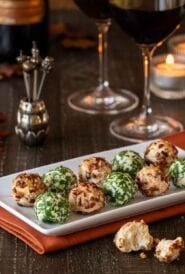Some people like jam, some like jelly, some insist on marmalade. What’s the difference?
Let’s start first with what they have in common – they all are basically some sort of fruit that has been combined with sugar, boiled until the sugar dissolves and then put into sterilized jars.
So, what differentiates them?
Note: terms can be different in the United Kingdom and other countries that speak “British” English not “American” English – just to make it more confusing!
Jellies include only the fruit juice; the solids are removed, and pectin is also added to the cooking process.
In Jams, the fruit pieces are crushed and left in the mixture (also with pectin and sometimes an acidic ingredient).
For Fruit Preserves, the fruit pieces are not crushed and left in the jelly mixture.
The answer is “it depends” – on how you are using it. For serving alongside your favorite rolls or biscuits, they are both delicious! In sandwiches, you can use either but jam is easier to spread than preserves, since the fruit pieces are crushed in jam while left whole in preserves. For baking, again, it depends on what you are making. Not only can the flavor vary (preserves are typically more “fruity” tasting) but also sometimes the consistency, too. The safest approach is to follow the recipe!
Marmalade is made the same way as preserves, but using the peel and pulp of a citrus fruit.
Conserves are a mixture of cooked fruits, nuts and sometimes raisins.
According to the National Center for Home Food Preservation, the proper combination of fruit, pectin, acid and sugar results in the mixture forming a gel and helps to preserve the end product.
All these fruit spreads contain some form of sugar and most contain pectin, either naturally or added. Actually, pectin is naturally found in all fruits! Some contain enough to form a gel on their own, others require more pectin to be added, either through combining in other fruits high in pectin or by adding a commercial pectin product.
You can substitute honey for up to half of the granulated sugar, just keep in mind that honey tends to be sweeter so you may want to reduce the quantity a bit. You can also make any of these fruit spreads with sugar substitutes, but I don’t believe they taste as good and have a less desirable texture.
Unopened, well-sealed jars of jams, jellies, preserves and marmalade will last up to 1 year. Store in a dark, dry, cool place. When opened, they can be stored, covered, in the refrigerator for up to 1 month. I have found some that will last a bit longer, but they start to lose their flavor over time.





